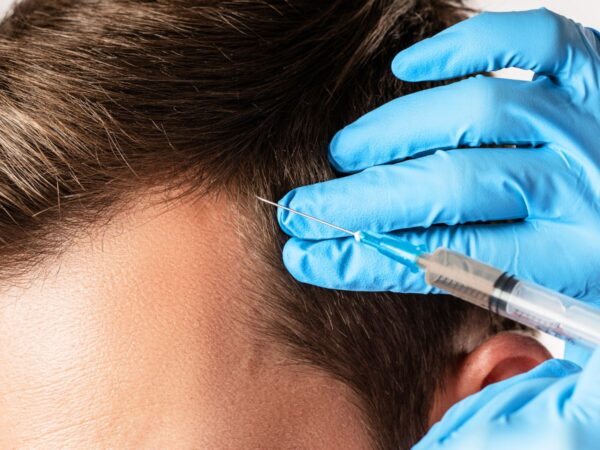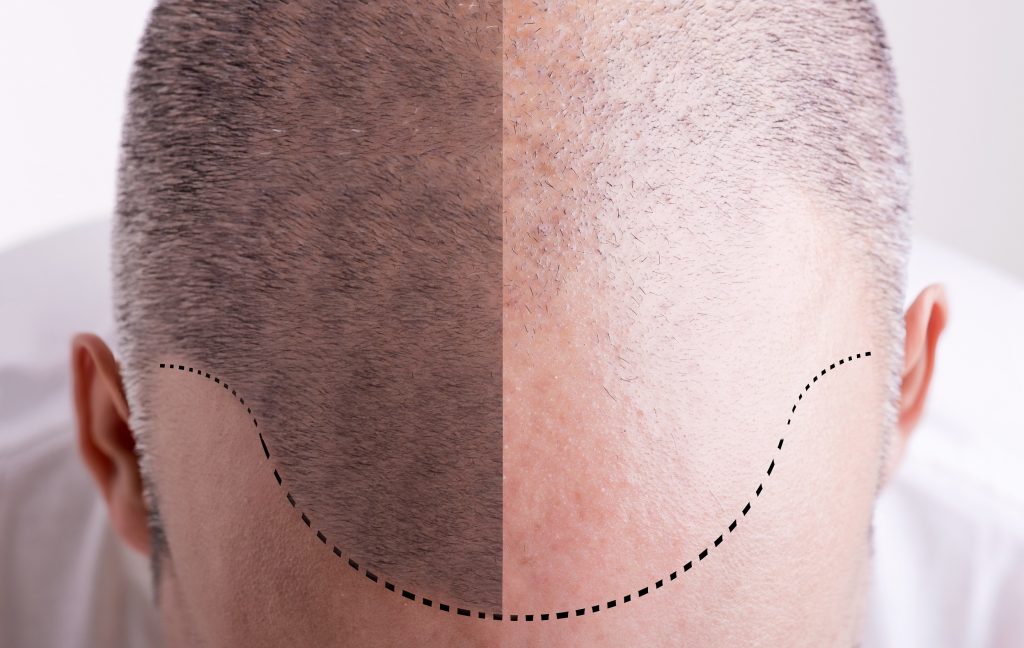The treatment of androgenetic alopecia (i.e. the cause of hair loss) with the help of stem cells is still in the stage of clinical trials. More than 3,500 clinical trials with stem cells for various conditions are underway, involving patients whose problems have not responded to conventional treatments. Nevertheless, no center that makes applications for the treatment of alopecia can promise guaranteed results, as these vary from patient to patient.
The sure thing is stem cell therapy is autologous, i.e. it is done with the body's own elements and absolutely safe. Also, stem cell therapy does not limit the possibilities for future hair transplantation. The hair follicles (hairs) in the donor occipital region remain unaffected, so stem cell therapy it can precede and delay a transplant.
In still other cases, stem cell therapy can be done years after the transplant in case the donor area is insufficient to give us new hair follicles, for repeated complementary transplantation.
The difficulties with stem cell therapy are:
- Their proper placement in the area of thinning - as it is impossible to completely predetermine the direction in which the new hairs will grow
- Determination of the density of new hair growth
On the contrary, during implantation-transplantation, the doctor precisely determines the direction of the hair he implants and has control over the distribution of hair follicles at correct distances in the area.
With hair follicle cloning through stem cell therapy, it is not possible to accurately predict the percentage of hair follicles that will grow, nor to ensure uniform density.
Before & After Treatment
You can see the course of each treatment in the slider below. By pressing the arrows at the bottom you can see the result per session

First session
At vero eos et accusamus et iusto odio dignissimos ducimus qui blanditiis praesentium voluptatum deleniti atque corrupti.

Second session
At vero eos et accusamus et iusto odio dignissimos ducimus qui blanditiis praesentium voluptatum deleniti atque corrupti.

Third session
At vero eos et accusamus et iusto odio dignissimos ducimus qui blanditiis praesentium voluptatum deleniti atque corrupti.
Also, no one can guarantee that the new hairs will follow the normal life cycle of the remaining hairs in the area, nor that they will stay forever like the hairs we implant which come from the occiput, which is not hormonally affected. We should also mention that, for hair follicle cloning to be approved in the future, it will have to be completely safe. This means that the cultivation of the stem cells should be done in specially accredited laboratories, which significantly increases the cost of the treatment.
A review of clinical studies shows that at a research level the creation of new hairs from cells of the papilla of the hair follicle (i.e. the root of the hair) has been achieved, however, there is still no clinical application in this. Also, in January 2014, the leading scientific journal "Nature" published a clinical study in which, from differentiated adult skin cells, epithelial stem cells were created from which new hair follicles can also arise(!). Even in this, however, there is no clinical application to date.
A recent publication of February 2016, in the leading scientific journal "Science" entitled "Aging, Alopecia and Stem Cells", refers to the investigation of the biochemical and genetic mechanism by which the cyclic activation and cessation of hair follicle stem cells occurs. Stem Cells) during the anagen phase (i.e. when the hair grows) and the telogen (i.e. the resting phase of the hair) by protein factors such as Wnt (activation) and BMP (pause). Their research shows that alopecia is affected both by endogenous factors - such as the aging of the body's cells - and by exogenous environmental factors.
In conclusion, stem cell therapy cannot yet replace hair transplant-implantation which redistributes existing hair follicles without creating new ones, however it provides a guaranteed and permanent result. The scientific interest in stem cell therapies is very promising, so it is expected to give us in the near future viable treatments by creating new hair follicles, which will be an unlimited source of new hair.


